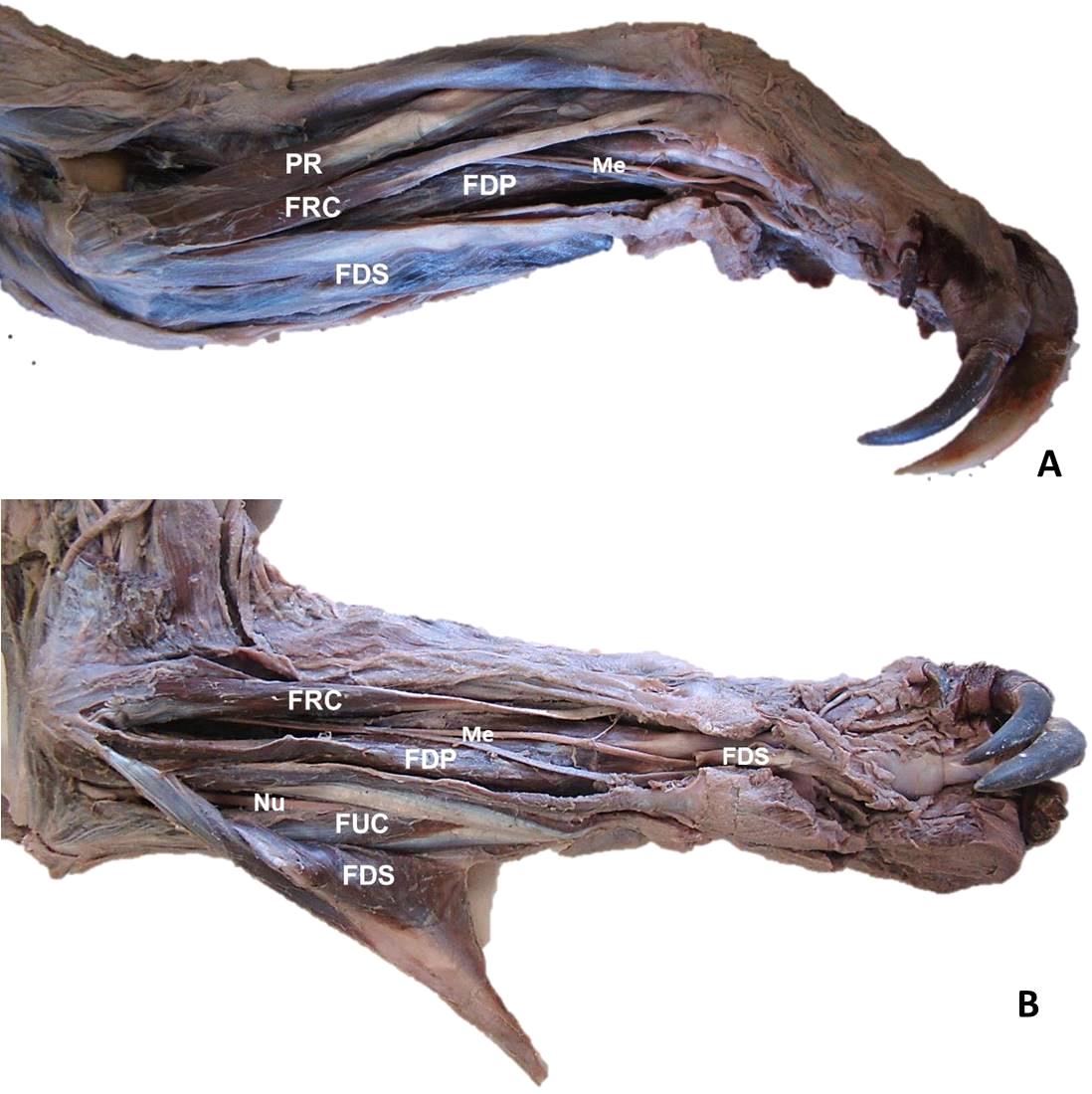Anatomical aspects of the forearm muscles of Myrmecophaga tridactyla
DOI:
https://doi.org/10.21708/avb.2021.15.1.9615Abstract
The giant anteater is one of the species classified as vulnerable to extinction. Burning and being run over are among important causes in the decrease of individuals of this species and a better knowledge of the anatomy of these animals can contribute to the treatment of injured animals and their restoration to the environment. Thus, the objective of this work was to describe aspects of the anatomy of the muscles of the forearm of M. tridactyla. For this purpose, six adult specimens were used, three females and three males. The corpses were fixed with a 10% formaldehyde solution and preserved in vats containing the same solution. The thoracic limbs were dissected by routine dissection techniques. The forearm muscles of M. tridactyla were: brachioradialis; radial carpal extensor; common finger extensor; lateral finger extensor, ulnar carpal extensor; finger extensor I and II; long abductor of finger I; supinator, radial carpal flexor; ulnar flexor of the carpus, superficial flexor of the fingers, deep flexor of the fingers, pronator teres and square pronator, which were innervated by the radial, ulnar and median nerves. These muscles give a large volume to the forearm, are robust and have highly developed tendons, especially those involved with the flexion of the carpus, digits and elbow, actions that are fundamental to your defense habits and search for food.
Downloads

Downloads
Pubblicato
Fascicolo
Sezione
Licenza
Autores que publicam na Acta Veterinaria Brasilica concordam com os seguintes termos: a) Autores mantém os direitos autorais e concedem à revista o direito de primeira publicação, com o trabalho simultaneamente licenciado sob a Licença Creative Commons Attribution que permite o compartilhamento do trabalho com reconhecimento da autoria e publicação inicial nesta revista. b) Autores têm autorização para assumir contratos adicionais separadamente, para distribuição não-exclusiva da versão do trabalho publicada nesta revista (ex.: publicar em repositório institucional ou como capítulo de livro), com reconhecimento de autoria e publicação inicial nesta revista. c) Autores têm permissão e são estimulados a publicar e distribuir seu trabalho online (ex.: em repositórios institucionais ou na sua página pessoal) a qualquer ponto antes ou durante o processo editorial, já que isso pode gerar alterações produtivas, bem como aumentar o impacto e a citação do trabalho publicado (Veja O Efeito do Acesso Livre).


 Esta obra está licenciada com uma Licença
Esta obra está licenciada com uma Licença 